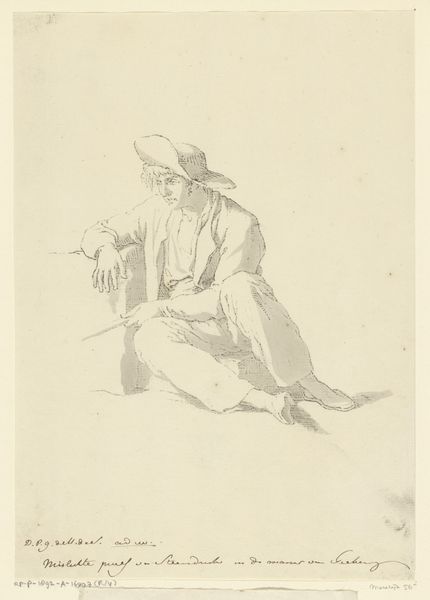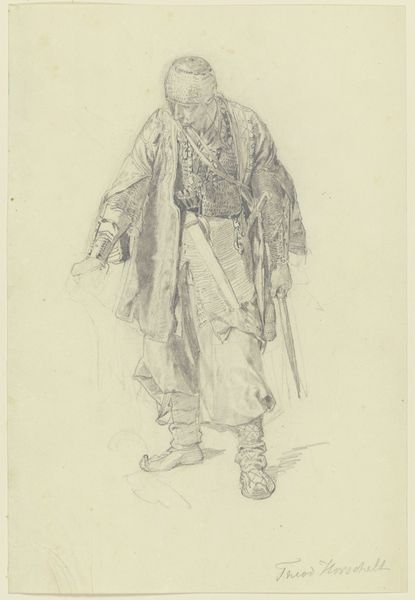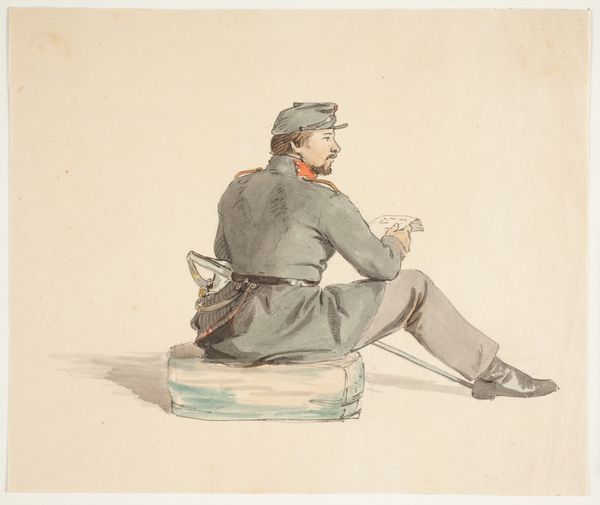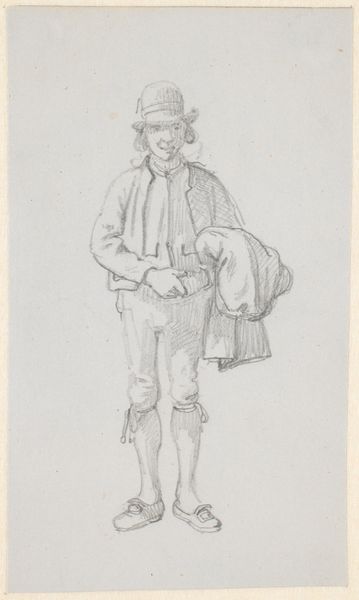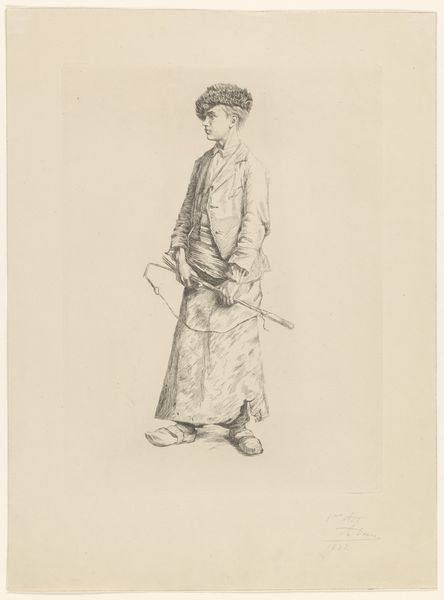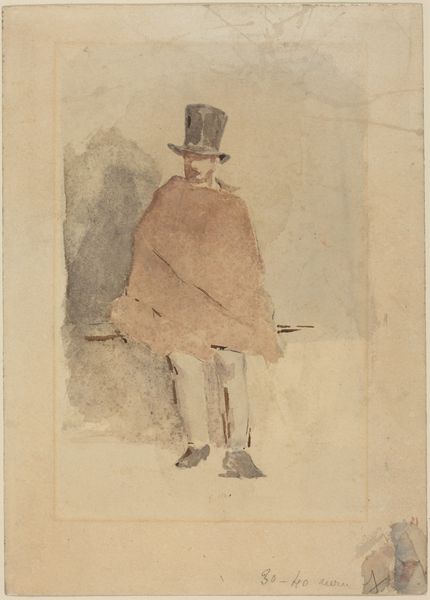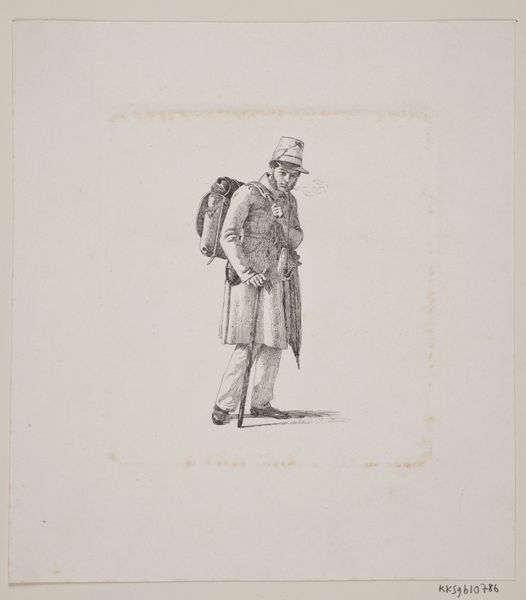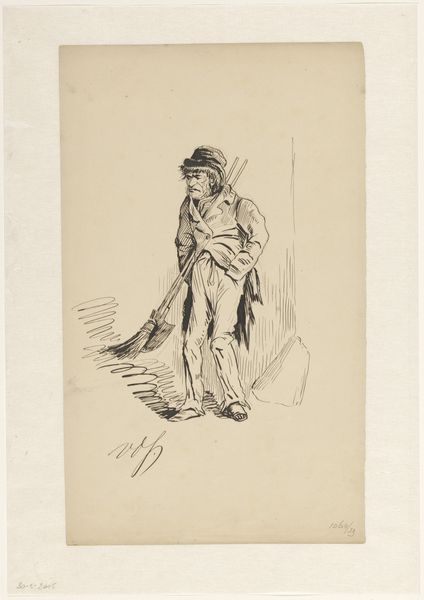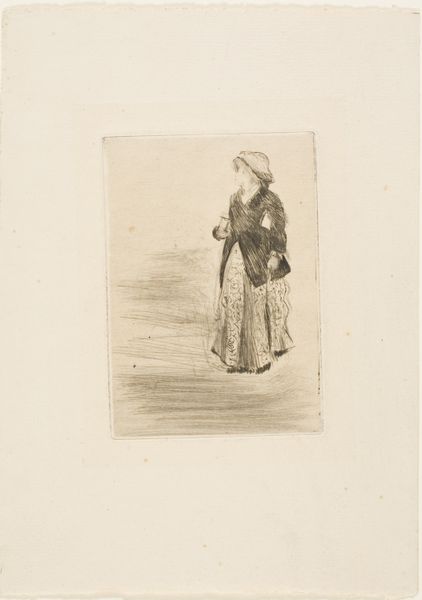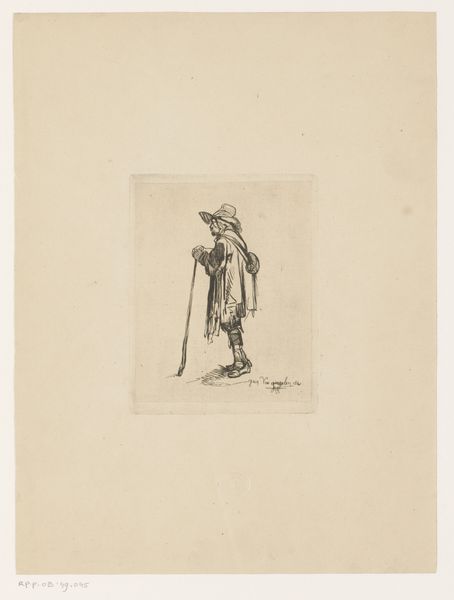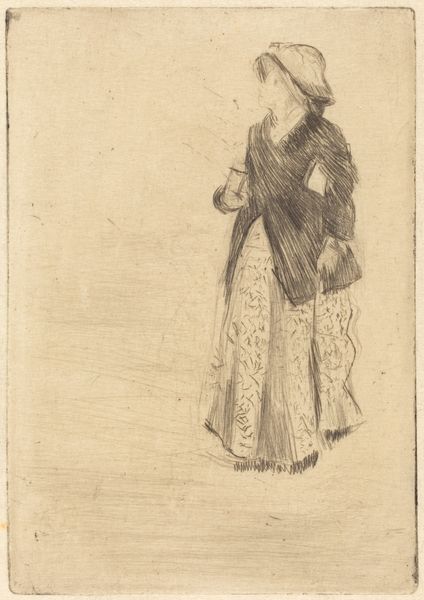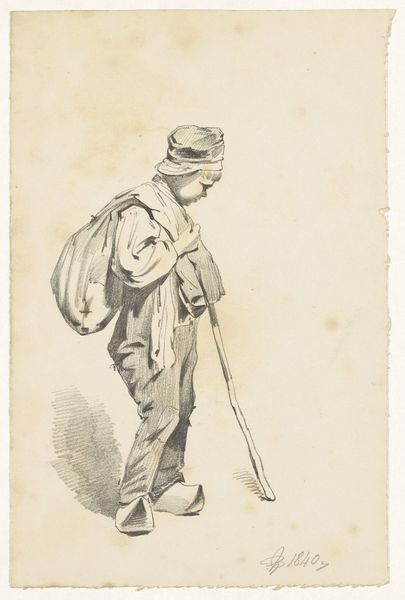
Dimensions: height 168 mm, width 147 mm
Copyright: Rijks Museum: Open Domain
Curator: Louis Ducros created this watercolor and pencil drawing in 1778, titled "Zoon van kapitein Erié met viool"—"Son of Captain Erié with Violin". It now resides in the Rijksmuseum. Editor: It strikes me as wonderfully intimate, almost melancholic. The muted blues and grays contribute to this contemplative atmosphere. There’s a delicate fragility in the subject and the rendering. Curator: Precisely! Consider the era: the late 18th century, Rococo waning. There’s a shift from portraying lavish aristocracy to intimate bourgeois scenes. Notice his modest attire; he isn’t idealized, which tells us something about shifting societal values toward realism. Editor: Yes, and look at the enduring symbolism of music. The violin here, beyond its immediate representation, carries a history of social entertainment but also personal, often solitary expression. It’s visually tied to emotion; that S-curve evokes a soulful tension. Curator: Absolutely. What’s fascinating is thinking about the cultural weight placed upon children, especially sons, within familial legacy. Displaying a young boy mastering an instrument suggests refinement and cultural capital, echoing his father's standing without being boastful, which aligns well with Enlightenment sensibilities. Editor: Indeed. While the boy is presented in the position of a musician, he isn’t actively performing, caught instead in a private, reflective moment. Even the gray cloth beneath him, draped to make a temporary seat more bearable, hints at making space and an opportunity. Curator: Considering the lack of precise facial detail, he seems somewhat depersonalized, representative less of an individual and more of a societal expectation placed on him, as the ‘son of’. He is performing a certain kind of role in this scene. Editor: I hadn’t thought of it like that. Instead, the facelessness of his being creates almost a silhouette, where what he signifies supersedes individuality. That resonates with an awareness of youth caught in the making of a particular memory. Curator: The soft coloring style definitely captures youthfulness. We see, then, an important moment in constructing early bourgeois identity as both an aesthetic performance, and also embedded with societal expectations. Editor: So much visual economy for so many subtle but important ideas. A testament to how visual emblems retain potency across centuries.
Comments
No comments
Be the first to comment and join the conversation on the ultimate creative platform.
